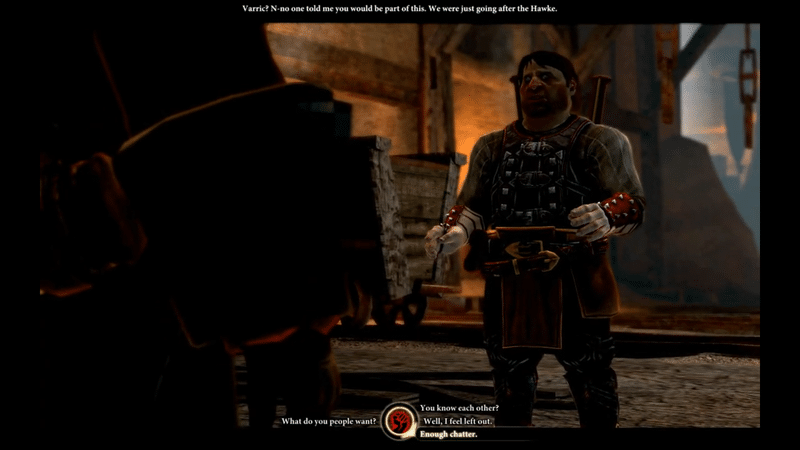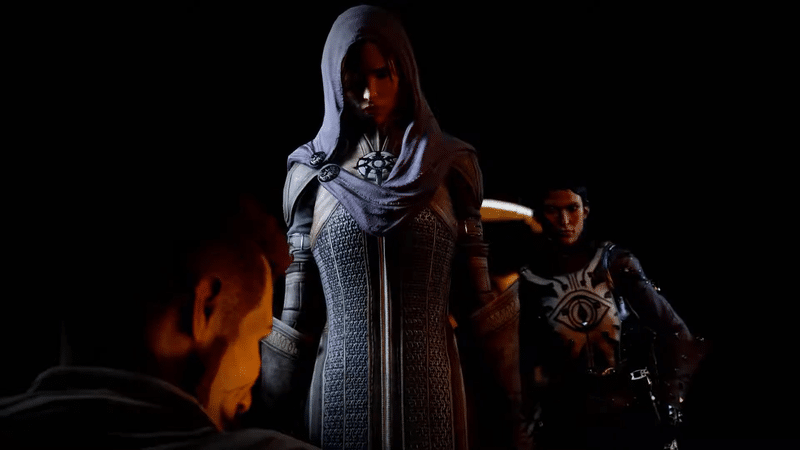The Dragon Age franchise started in an interesting place. Following Bioware’s work on several licensed properties, they desired to build their own IP for the company’s health. Building off their work on Baldur’s Gate and Neverwinter Nights, they created their own foray into the fantasy genre. Dragon Age: Origins was similar to the isometric RPGs that had been Bioware’s bread and butter but with some improvements for console releases. As the series continued, however, changes had to be made to compete with their fellow Western RPGs. Here are the three key evolutions the franchise made in its sequels.
The Dialogue Wheel and Voice Acting

Borrowed from its Bioware sibling Mass Effect, the dialogue wheel was first implemented in Dragon Age II. Whereas in Dragon Age: Origins the player’s dialogue choices would be written out in a list and not voice acted, the protagonists of subsequent games were instead fully voiced. This meant rather than include their entire spoken dialogue in a list, they would instead exist as shortened paraphrases around a wheel. Like in Mass Effect, positions on the wheel were often consistent with specific tones. The addition of icons was brought to the wheel to add more obvious intent behind choices. An angry first represents a harsh comment, while a heart makes a flirtatious choice more obvious.
A fully-voiced protagonist adds a lot to these games but takes away just as much. Some players would complain about their dialogue options, often feeling the paraphrase did not sufficiently tell them what they were choosing. Many felt that fewer dialogue options were available when condensed into this more structured system, though Bioware insisted that they always wrote choices using the same categories back in Origins. This continued into Inquisition with the addition of emotional markers for some choices. This added the ability to express how your character felt in certain situations. Ultimately this served to clarify what you were going to get from the voice actor’s performance.
Press a Button, Swing a Sword
Dragon Age: Origins was first and foremost an isometric tactical RPG. Even from a console player’s perspective, when the default perspective instead shifted to a camera directly following their character, the game was slow and methodical. The goal was to switch between party members, choose their targets and abilities, and then let the action play out. In Dragon Age II, more emphasis was put on an action-oriented experience. Now, to make an attack, the player simply pressed an attack button. They could adjust the options to let you simply hold the button down, but the intent was clear. The developers loved to say that now every button press translated directly to your character’s action.
The ability to pause combat and swap between party members remained, although more and more emphasis was put on playing your character for in-the-moment action. Dragon Age: Inquisition notably limited the number of active abilities you could have equipped as compared to the prior games, and this only seems to be continuing as we move forward. Dragon Age: The Veilguard has removed any tactical camera options, the ability to change party members, and having more than three abilities available at a time. Instead, the focus is now on action combat, with dodging and parrying built in. It’s a far cry from the series’ beginnings.
A Defined Protagonist

Many people enjoyed the character creation in Dragon Age: Origins for what it was. With different origins available, there was a sense that you could choose who your character was and how they responded to their situation. While ultimately the protagonist took on the same journey regardless of the starting point, it felt like your character and your adventure. Starting with Dragon Age II, this was shifted quite a bit. The main character had a defined last name, Hawke, which they would be referred to as almost exclusively. They had one background and felt like much more of a defined character. You were shaping them through choices, but they were always the same core person.
Dragon Age: Inquisition continued this trend with the Herald of Andraste (later the Inquisitor). While you could once again choose a race, your character was always in the same place for roughly the same reason and went on the same journey. You could respond to these events differently and make quite different choices, but it felt different. The games cast off the illusion of letting you play a character that felt like yours and instead allowed you to shape the character they came up with. While still satisfying to many RPG lovers, it was a different kind of experience as compared to where the franchise started.
Final Thoughts
It is clear the goal for Bioware has always been to give Dragon Age its own identity. What started as a clear attempt to use their experience with the Dungeons and Dragons license to create their own world moved away from a recreation of a turn-based tabletop game. As they sought to tell a cinematic and action-heavy story, elements that made the game feel like a tabletop RPG brought to life were shed. Instead, Bioware cemented its reputation as a cinematic storyteller, letting the player adjust just enough for it to still be an RPG. Despite these changes and further evolutions promised in the upcoming fourth installment, the games retain a style that is distinctly theirs.
For More Great Content
Craving top-tier content that covers it all? From electrifying sports highlights and insider entertainment news to expert gaming tips and sharp betting advice, we’ve got you covered. Dive into our curated articles to stay ahead of the game with the latest sports action, uncover the hottest trends in entertainment, and get the lowdown on gaming strategies that could level up your play. Plus, our betting advice will sharpen your edge and boost your chances of winning big. Whether you’re looking to stay updated or gain a competitive edge, our content is your go-to source for all things exciting and relevant. Don’t miss out—explore now and power up your knowledge! Follow us on Twitter/X @TotalApexSports, to stay informed.

